Traverse Global v11.2
PO Requested Ship Date Usage Overview
The PO Requested Ship Date has been used for a variety of applications to the extent that its purpose is no longer clear. Features added as of Build 19137 are intended to clarify this usage.
The PO Requested Ship Date indicates to a vendor when you would like the product shipped to you, which should be prior to the date the product is needed for use in production or is due to ship to a customer. NOTE: This date is NOT used for requirements planning.
The Expected Receipt Date is the date you want the product received in-house and available for use in production or to ship to a customer. This can help your vendor plan when to ship the items so they arrive at your facility when they are needed.
When the expected receipt date is considered, the most granular date for the order/item will be used. The user can assign a default date to the order as a whole, but can also assign dates to each line item on an order. The order of use is:
- Line Item Expected Receipt Date is used first
- Then, if that date does not exist, the system will use the Order Expected Receipt Date.
- Finally, if none of the above dates are available, the system will use the Order Date (Transaction Date/InitDate/etc)
An Expected Receipt Date field has been added to the Ship-To tab on the PO Transactions screen, as well as in the line items grid at the bottom of the screen. Use this field, in either location, to indicate to the system when you want to receive the item in-house and have it available for use. The Requirements Planning process will use this date when calculating availability and purchase requisition dates.
Workflow
To see how the expected receipt date and the PO transaction date affect requirements planning and availability, we will walk through the process.
Item Setup
First, we will set up an item with a 15-day lead time, a safety stock quantity of 8, and a minimum order quantity of 10 with a quantity of 15 in stock.
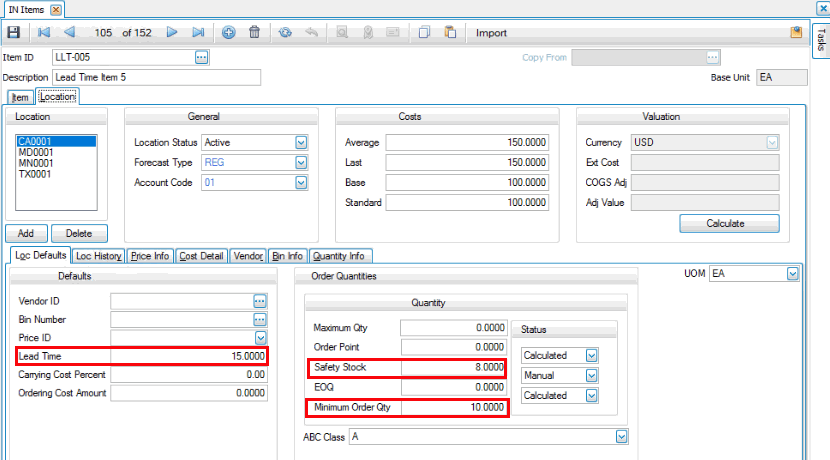

Create Sales Orders
Next, create some sales orders for the item to create demand. We will create two sales orders, each with the item, for two different customers, with different requested ship dates. Sales order requested ship dates are determined by the customer’s needs when the order is placed.
SO 24
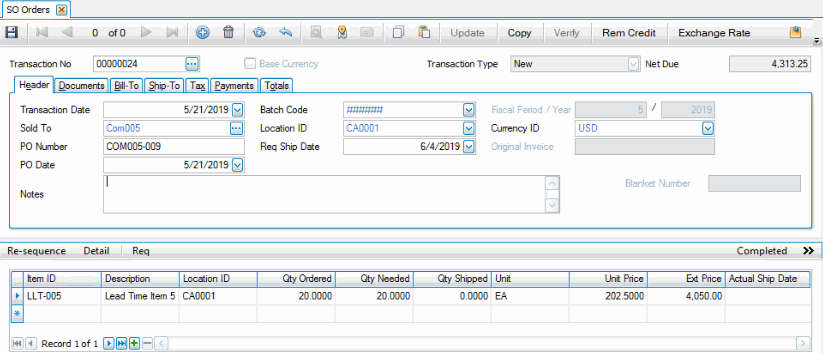
SO 25
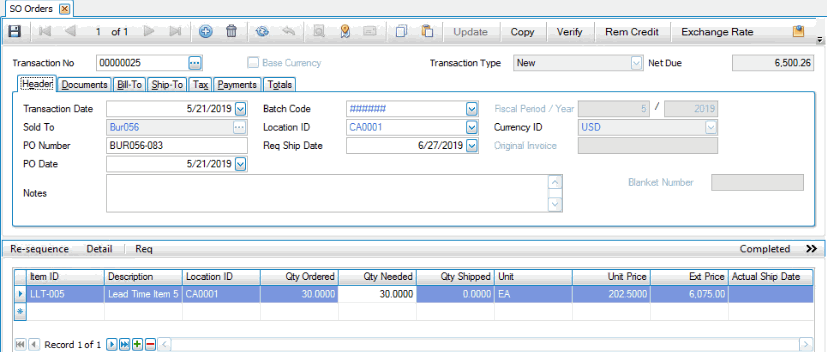
Generate Requirements Planning Data
Once you regenerate RP data, view the Standard RP Report.

Generate Purchase Requisitions
Using the Generate Purchase Requisitions function, build a list of requisitions for the item.
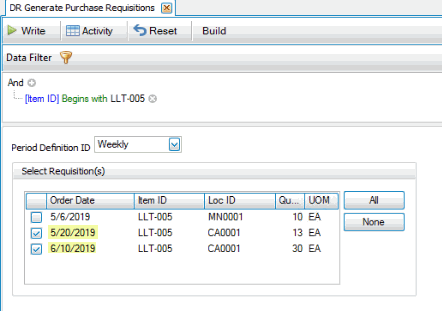
Select the requisitions that match the shortages for the inventory location listed on the sales orders. Click Write to create the requisitions.
Generate Purchase Requisitions log

PO Requisitions
Generate orders for the requisitions that were created. Notice the Expected Receipt Date is 15 days (lead time) after the Order Date, and on or before the customer's requested ship date from each of the sales orders.

Generate Purchase Requisitions again
Generate RP Data again, and view the Standard RP report.
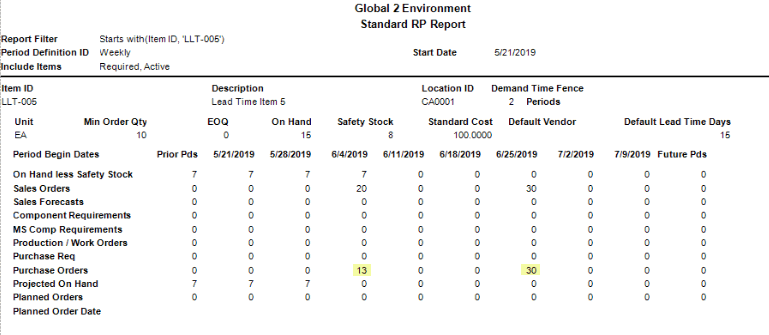
Auto-Created Purchase Orders
The automatically generated purchase order shows the expected receipt date is the same as or earlier than the customers' requested ship dates on the sales orders.
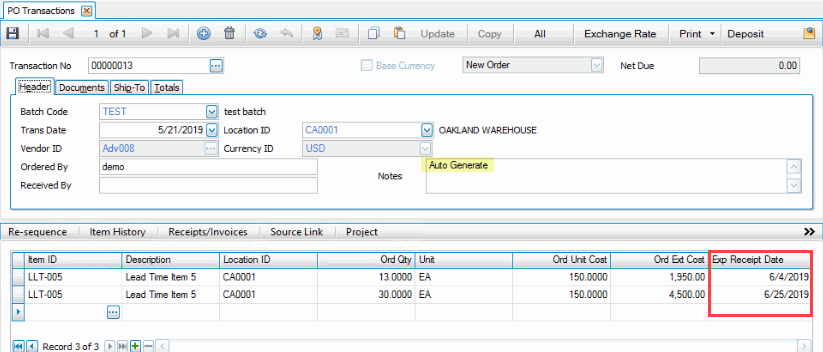
Enter another sales order for the item.
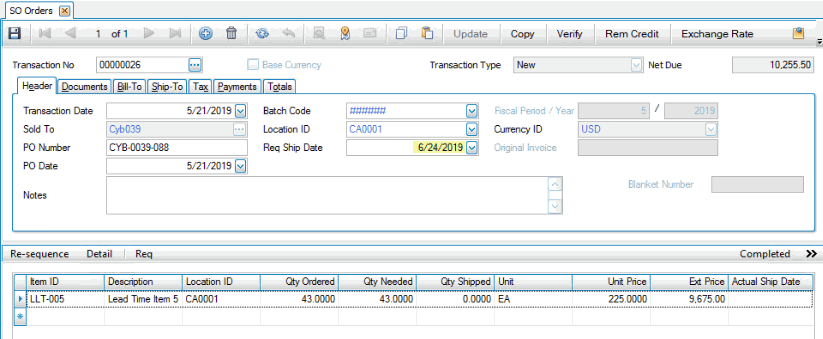
Generate RP data and view the standard RP report.
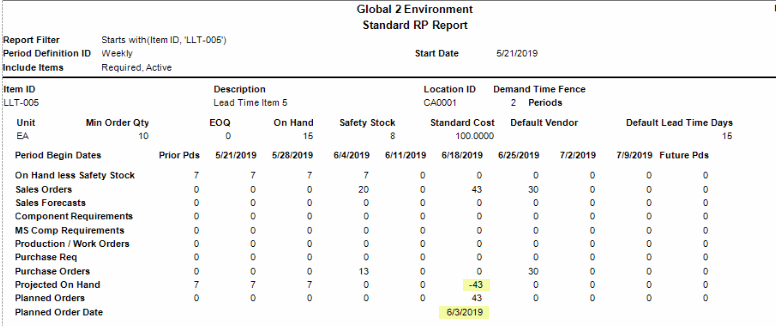
Generate Purchase Requisition for new requirement.
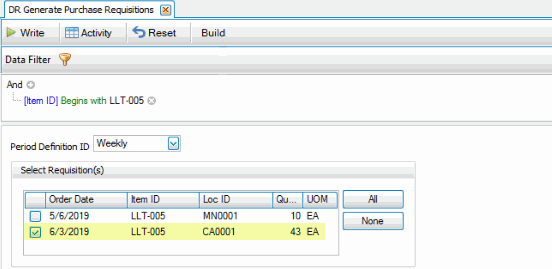

Create POs from Requisition.

Generate RP Data.
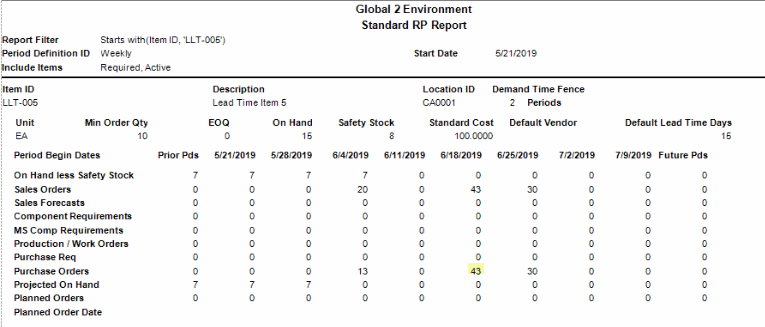
Auto-created Purchase Order
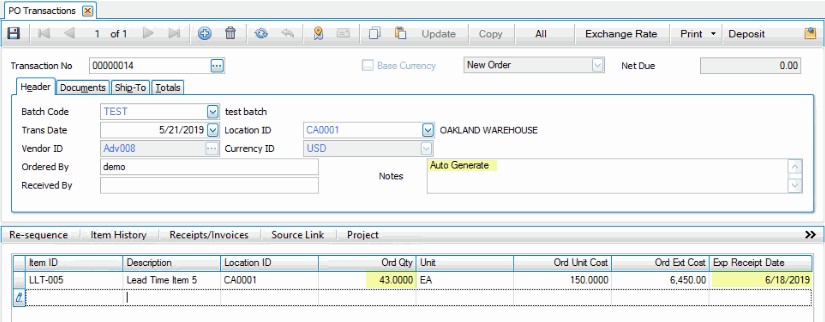
Using the Expected Receipt Date on Purchase Orders
When creating purchase orders, you can ensure the items on the order are calculated properly by requirements planning by utilizing the Expected Receipt Date field. The Expected Receipt Date is the date you want to receive the order in-house. There is an expected receipt date field in the PO Transaction header on the Ship-To tab, as well as on each line item. The system will use the line item expected receipt date first, then the expected receipt date in the header if the value does not exist on the line item. If neither value exists, the system will use the PO transaction date to use for requirements planning. (Keep in mind that the PO Requested Ship Date is the date you are asking your vendor to ship the item, and not the date you want the item to arrive. The PO Requested Ship Date does not affect requirements planning.)
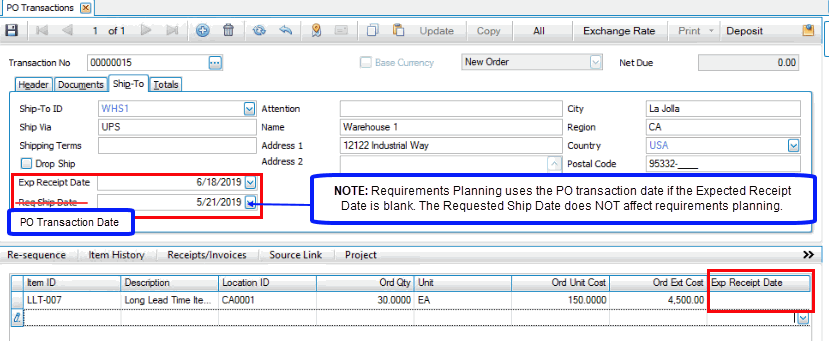
Line Item Detail view

Now we can use requirements planning to check availability.
Generate RP Data, then view the Standard RP Report.

The Expected Receipt Date in the header of the purchase order was 6/18/2019, and the Standard RP Report shows those 30 items from the PO as part of the projected on-hand quantity for 6/18/2019.
For comparison, if we clear the Expected Receipt Date in the header of the PO, and only leave the transaction date of the PO, and then generate RP data, we will see a different result.
PO with no Expected Receipt Date

Now the RP report shows the items will be available by the PO Transaction Date. Note that even though the RP Report shows the items are available on 5/21/2019, it is not the actual date the items would be available in-house, because even if the vendor shipped the product on that day, it might take a week for those items to arrive. Using the PO Transaction Date as a basis for requirements planning calculations can be quite inaccurate.

Summary
The Expected Receipt Date field enhances the accuracy of the requirements planning data by calculating the availability of items at the time of receipt. NOTE that the PO requested ship date is NOT used by Requirements Planning for RP calculations.
If the Expected Receipt Date is missing from both the line item and the order, Requirements Planning will use the PO transaction date for RP calculations, which will result in inaccurate RP information if the supplier does not ship the item using a same-day delivery method.
Use the Expected Receipt Date to indicate to the system (and to your vendors) when you want to receive the items. This will ensure greater accuracy of the requirements planning data.